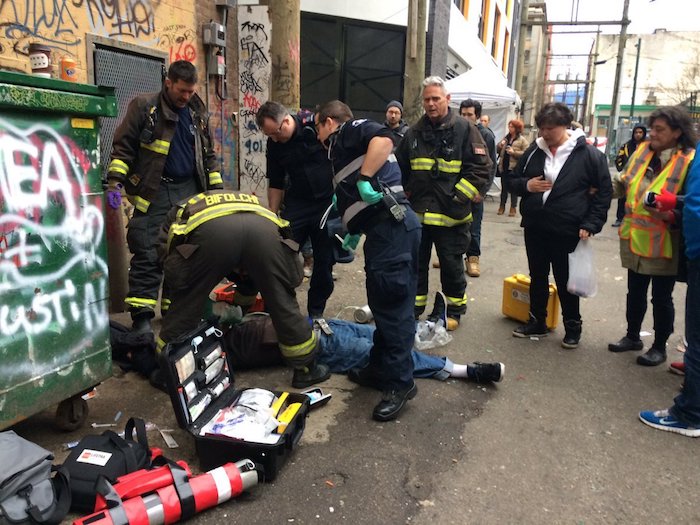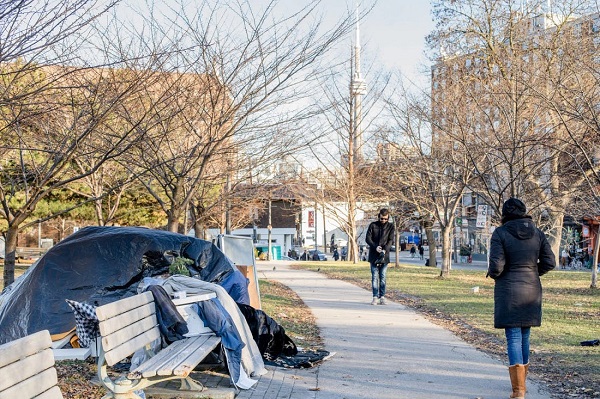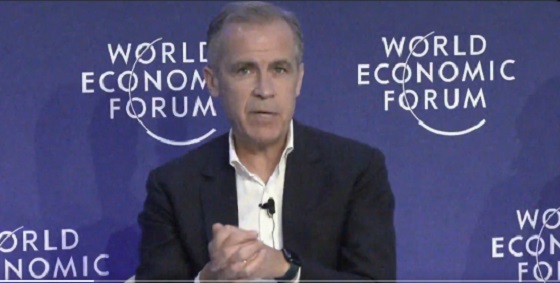Addictions
14-year old Kamilah Sword died after becoming addicted to diverted “safer supply” opioids. Now her loved ones are speaking up.


By Adam Zivo
New documentary exposes suffering caused by Canada’s “safer supply” programs
It has been widely reported that “safer supply” opioids are getting into the hands of youth and causing new addictions and deaths – but this fact, terrible as it is, can feel abstract to many. That’s why I’ve released this new 28-minute documentary, “Government Heroin 2: The Invisible Girls,” to illustrate the terrible harms being inflicted upon families by this failed policy.
The film focuses on the story of Kamilah Sword, a 14-year-old girl from Metro Vancouver who died of drug-related causes in 2022. Before her death, Kamilah and her friends had been using hydromorphone, an opioid as potent as heroin, that originated from government-funded safer supply programs.
These programs claim to reduce overdoses and deaths by providing addicts with pharmaceutical-grade addictive drugs – typically hydromorphone – as an alternative to riskier street substances. In reality, though, most addicts simply divert (sell or trade) their safer supply to the black market to acquire stronger drugs, such as illicit fentanyl. This then floods surrounding communities with hydromorphone, crashing its street price by up to 95 per cent and fueling new addictions.
Kamilah and her friends were victims of this corrupt system.
In 2021, hydromorphone pills suddenly became popular at their school. The pills, which were colloquially called “dillies,” were abundant and cheap and many teenagers did not believe that they were dangerous to experiment with, as they had originally been prescribed by the government and were marketed as “safe.”
The girls did not understand that they were essentially playing with heroin. Not until it was too late. But they were hopelessly addicted by then and as their opioid tolerances grew, so did their appetite for dillies.
Two of Kamilah’s friends – Amelie North and Madison (a pseudonym) – escalated to using fentanyl and eventually went to rehab. But Kamilah herself was not so lucky. She was found dead, curled up in the fetal position in her bed and with foam on the corner of lips, one warm August morning.
It was only after her death that her father, Greg Sword, learned about how safer supply had destroyed the lives of his daughter and her friends. Amelie and Madison explained to him, for example, how they would sometimes travel downtown and purchase dillies directly from safer supply patients, who gave the cheapest prices.
The Trudeau Liberals and BC NDP have spent years aggressively advocating for safer supply and have repeatedly denied that diversion is a serious issue that harms youth. So when Kamilah’s loved ones went public with their story in the summer of 2023, it caused a national scandal.
The situation was further complicated when the BC Coroners Service, after a considerable delay, released Kamilah’s coroner’s report in late December 2023. The report ruled out hydromorphone as a cause of death and claimed that Kamilah had died of a cardiac arrhythmia (irregular heartbeat) caused by cocaine and MDMA.
But when several physicians and forensic pathologists reviewed the report, they noticed some concerning irregularities.
As Kamilah’s body was not sent to autopsy (a scandal in itself), it would’ve been impossible to confidently diagnose an arrhythmia as a cause of death. And in complex polydrug cases such as Kamilah’s, the best practice would have been to list every major death as contributing to mortality – including hydromorphone.
Additionally, the coroner claimed that it was unknown from where the hydromorphone in Kamilah’s body had originated – even though Kamilah’s friends and family had been clear, across several media reports, that the drugs were diverted safer supply. It was impossible that the BC Coroners Service would have been unaware of this, but, strangely enough, no attempt was made by the coroner to interview Kamilah’s loved ones about her death, despite such interviews being regular practice.
Subscribe for free to get BTN’s latest news and analysis, or donate to our journalism fund.
Greg Sword, along with Amelie and her mother, recently launched a class action lawsuit against a wide array of defendants – including the governments of British Columbia and Canada – for irresponsibly marketing and prescribing safer supply, and for their “wilful blindness” to the prevalence and dangers of diversion.
The tragedy of this story cannot be adequately captured with words. The tears of a mourning father need to be seen and heard to be grasped. The sobs of a mother who laments her daughter’s fentanyl addiction has no substitute.
This is why Government Heroin 2: The Invisible Girls exists. To give these families a chance to be properly understood. And to better inform the public, through visceral storytelling, of the outrageous failures of Canada’s institutions and addiction policies.
This film is the second in a series. The first installment – “Government Heroin” – focuses on a 25-year-old student in Ontario who purchased thousands of diverted safer supply films. That 19-minute film provides a slightly more technical overview of the safer supply diversion scandal, so while each film stands on its own, the two also pair together very well (with a brisk total runtime of only 47 minutes).
I implore you to watch this new documentary, and its predecessor, too, if possible. They are sad and challenging, and yet vitally necessary for anyone who is concerned about Canada’s eroding public order and, of course, the predations of organized crime.
Subscribe to Break The Needle. Our content is always free – but if you want to help us commission more high-quality journalism, consider getting a voluntary paid subscription.
Addictions
BC premier admits decriminalizing drugs was ‘not the right policy’

From LifeSiteNews
Premier David Eby acknowledged that British Columbia’s liberal policy on hard drugs ‘became was a permissive structure that … resulted in really unhappy consequences.’
The Premier of Canada’s most drug-permissive province admitted that allowing the decriminalization of hard drugs in British Columbia via a federal pilot program was a mistake.
Speaking at a luncheon organized by the Urban Development Institute last week in Vancouver, British Columbia, Premier David Eby said, “I was wrong … it was not the right policy.”
Eby said that allowing hard drug users not to be fined for possession was “not the right policy.
“What it became was a permissive structure that … resulted in really unhappy consequences,” he noted, as captured by Western Standard’s Jarryd Jäger.
LifeSiteNews reported that the British Columbia government decided to stop a so-called “safe supply” free drug program in light of a report revealing many of the hard drugs distributed via pharmacies were resold on the black market.
Last year, the Liberal government was forced to end a three-year drug decriminalizing experiment, the brainchild of former Prime Minister Justin Trudeau’s government, in British Columbia that allowed people to have small amounts of cocaine and other hard drugs. However, public complaints about social disorder went through the roof during the experiment.
This is not the first time that Eby has admitted he was wrong.
Trudeau’s loose drug initiatives were deemed such a disaster in British Columbia that Eby’s government asked Trudeau to re-criminalize narcotic use in public spaces, a request that was granted.
Records show that the Liberal government has spent approximately $820 million from 2017 to 2022 on its Canadian Drugs and Substances Strategy. However, even Canada’s own Department of Health in a 2023 report admitted that the Liberals’ drug program only had “minimal” results.
Official figures show that overdoses went up during the decriminalization trial, with 3,313 deaths over 15 months, compared with 2,843 in the same time frame before drugs were temporarily legalized.
Addictions
Canada must make public order a priority again

A Toronto park
Public disorder has cities crying out for help. The solution cannot simply be to expand our public institutions’ crisis services
[This editorial was originally published by Canadian Affairs and has been republished with permission]
This week, Canada’s largest public transit system, the Toronto Transit Commission, announced it would be stationing crisis worker teams directly on subway platforms to improve public safety.
Last week, Canada’s largest library, the Toronto Public Library, announced it would be increasing the number of branches that offer crisis and social support services. This builds on a 2023 pilot project between the library and Toronto’s Gerstein Crisis Centre to service people experiencing mental health, substance abuse and other issues.
The move “only made sense,” Amanda French, the manager of social development at Toronto Public Library, told CBC.
Does it, though?
Over the past decade, public institutions — our libraries, parks, transit systems, hospitals and city centres — have steadily increased the resources they devote to servicing the homeless, mentally ill and drug addicted. In many cases, this has come at the expense of serving the groups these spaces were intended to serve.
For some communities, it is all becoming too much.
Recently, some cities have taken the extraordinary step of calling states of emergency over the public disorder in their communities. This September, both Barrie, Ont. and Smithers, B.C. did so, citing the public disorder caused by open drug use, encampments, theft and violence.
In June, Williams Lake, B.C., did the same. It was planning to “bring in an 11 p.m. curfew and was exploring involuntary detention when the province directed an expert task force to enter the city,” The Globe and Mail reported last week.
These cries for help — which Canadian Affairs has also reported on in Toronto, Ottawa and Nanaimo — must be taken seriously. The solution cannot simply be more of the same — to further expand public institutions’ crisis services while neglecting their core purposes and clientele.
Canada must make public order a priority again.
Without public order, Canadians will increasingly cease to patronize the public institutions that make communities welcoming and vibrant. Businesses will increasingly close up shop in city centres. This will accelerate community decline, creating a vicious downward spiral.
We do not pretend to have the answers for how best to restore public order while also addressing the very real needs of individuals struggling with homelessness, mental illness and addiction.
But we can offer a few observations.
First, Canadians must be willing to critically examine our policies.
Harm-reduction policies — which correlate with the rise of public disorder — should be at the top of the list.
The aim of these policies is to reduce the harms associated with drug use, such as overdose or infection. They were intended to be introduced alongside investments in other social supports, such as recovery.
But unlike Portugal, which prioritized treatment alongside harm reduction, Canada failed to make these investments. For this and other reasons, many experts now say our harm-reduction policies are not working.
“Many of my addiction medicine colleagues have stopped prescribing ‘safe supply’ hydromorphone to their patients because of the high rates of diversion … and lack of efficacy in stabilizing the substance use disorder (sometimes worsening it),” Dr. Launette Rieb, a clinical associate professor at the University of British Columbia and addiction medicine specialist recently told Canadian Affairs.
Yet, despite such damning claims, some Canadians remain closed to the possibility that these policies may need to change. Worse, some foster a climate that penalizes dissent.
“Many doctors who initially supported ‘safe supply’ no longer provide it but do not wish to talk about it publicly for fear of reprisals,” Rieb said.
Second, Canadians must look abroad — well beyond the United States — for policy alternatives.
As The Globe and Mail reported in August, Canada and the U.S. have been far harder hit by the drug crisis than European countries.
The article points to a host of potential factors, spanning everything from doctors’ prescribing practices to drug trade flows to drug laws and enforcement.
For example, unlike Canada, most of Europe has not legalized cannabis, the article says. European countries also enforce their drug laws more rigorously.
“According to the UN, Europe arrests, prosecutes and convicts people for drug-related offences at a much higher rate than that of the Americas,” it says.
Addiction treatment rates also vary.
“According to the latest data from the UN, 28 per cent of people with drug use disorders in Europe received treatment. In contrast, only 9 per cent of those with drug use disorders in the Americas received treatment.”
And then there is harm reduction. No other country went “whole hog” on harm reduction the way Canada did, one professor told The Globe.
If we want public order, we should look to the countries that are orderly and identify what makes them different — in a good way.
There is no shame in copying good policies. There should be shame in sticking with failed ones due to ideology.
Our content is always free – but if you want to help us commission more high-quality journalism,
consider getting a voluntary paid subscription.
-

 Business8 hours ago
Business8 hours agoQuebecers want feds to focus on illegal gun smuggling not gun confiscation
-

 Uncategorized1 day ago
Uncategorized1 day agoNew report warns WHO health rules erode Canada’s democracy and Charter rights
-

 Business8 hours ago
Business8 hours agoEmission regulations harm Canadians in exchange for no environmental benefit
-

 Crime1 day ago
Crime1 day agoFrance stunned after thieves loot Louvre of Napoleon’s crown jewels
-

 Courageous Discourse6 hours ago
Courageous Discourse6 hours agoNo Exit Wound – EITHER there was a very public “miracle” OR Charlie Kirk’s murder is not as it appears
-

 Energy1 day ago
Energy1 day agoMinus Forty and the Myth of Easy Energy
-

 Frontier Centre for Public Policy2 days ago
Frontier Centre for Public Policy2 days agoOttawa Should Think Twice Before Taxing Churches
-

 Alberta2 days ago
Alberta2 days agoBusting five myths about the Alberta oil sands








